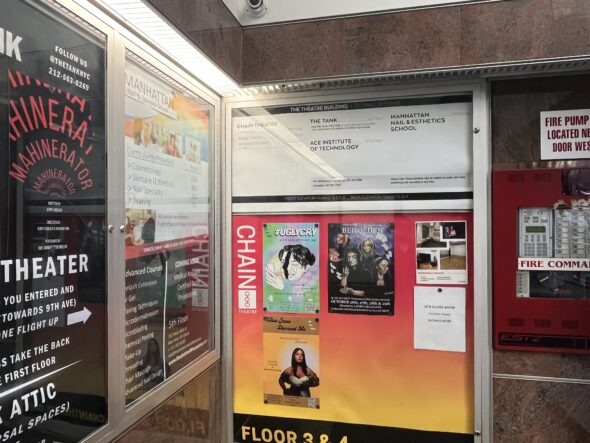
Several Midtown performing arts organizations received $10,000 grants, paid annually for the next two years, as part of a new program for small venues, which are often excluded from traditional funding.
Indiespace, a nonprofit that supports independent theaters in New York City, partnered with the Howard Gilman Foundation to distribute “The Little Venue That Could” grants to 13 organizations this fall. Randi Berry, Indiespace’s executive director, said these grants help small venues that are overlooked by private foundations and frequently ineligible for government support.
In post-pandemic New York City, these small venues struggle to survive, Berry said. She warns that without more funding and “consistent attention and visibility,” New York City’s indie theater community “will disappear,” having a significant impact on the city’s culture and economy.
A 2019 study by the Mayor’s Office of Media and Entertainment said small theaters created $1.3 billion in revenue and 8,400 full-time jobs. But representatives from small venues say the pandemic changed that landscape and revealed previously hidden vulnerabilities.
“Our sector was the first to close, but the last to open,” said Christina Perry, the director of development for the Chain Theatre, one of the grant recipients. “The unknown was really difficult. We did not know if we were even going to make it.”
Perry attributed the Chain Theatre’s survival to its history of “overcoming a lot of obstacles.” In 2016, the theater lost its lease when the landlord decided to convert its Long Island City building into luxury condos. Now in a new home on West 36th Street, the Chain Theatre will use The Little Venue That Could grant to pay its artists and rent.
Pavan Thimmaiah, another grant recipient, also emphasized the resilience of small venues. As the director of PMT House of Dance on West 25th Street, Thimmaiah said that the pandemic brought the artistic community together, but also exposed the industry’s weaknesses.
“The curtain got pulled back,” he said, “and the frailty of the arts industry in New York City and some of the inequities came to the forefront.”
There are problems with the way that arts funding is distributed, said Thimmaiah. “The funding goes to the top. The artists themselves and smaller organizations don’t get the same consideration.”
Zaheda Haidri, deputy general manager of The Actors Theatre Workshop, agreed that since smaller venues are “not selling as much as some of the bigger theaters,” they receive “less focus” from funders.
The Actors Theatre Workshop serves multiple roles, including providing rental rehearsal space and afterschool programs for vulnerable youth, said Haidri, who noted that the Indiespace grant is unrestricted and can be used for anything. She said her theater plans to spend the money on rent and utilities. “It’s extremely helpful,” she said, adding that the pandemic highlighted that “the physical space is important” for artists who “need to feel safe” as they develop their creativity.
Randi Berry of Indiespace said these vulnerable spaces need more government attention. She recently asked Manhattan Community Board 4 to write to the Mayor’s Office of Media and Entertainment to request a new study on small theaters.
Berry used the last study, conducted in 2019, as a tool to request funding from philanthropists. The data showed that “the largest community of artists in the city are indie artists,” she said, adding that updated data can help assess the industry’s post-pandemic needs.
Johanna McCabe, press secretary for the Mayor’s Office of Media and Entertainment, said in an email that “there are no confirmed plans to do another small theatre study at this time.”
Berry said she will continue to push for help from the government and philanthropists who can “step in and fill in the gaps.” Despite the challenges that small performing arts organizations face, she still has hope.
“I always have to believe that things are bouncing back,” Berry said, but only if “everybody steps up.”